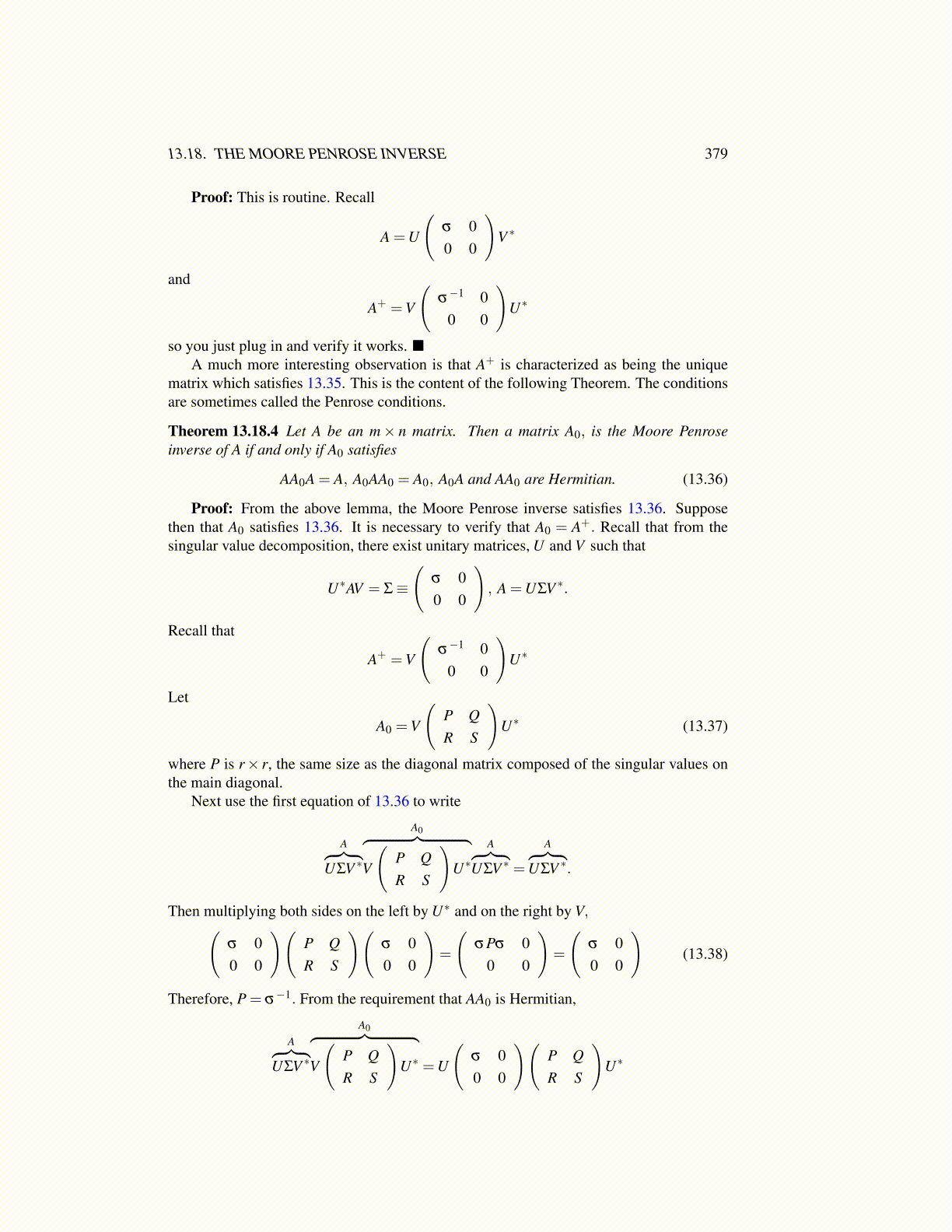
13.18. THE MOORE PENROSE INVERSE 379
Proof: This is routine. Recall
A =U
(σ 00 0
)V ∗
and
A+ =V
(σ−1 0
0 0
)U∗
so you just plug in and verify it works. ■A much more interesting observation is that A+ is characterized as being the unique
matrix which satisfies 13.35. This is the content of the following Theorem. The conditionsare sometimes called the Penrose conditions.
Theorem 13.18.4 Let A be an m× n matrix. Then a matrix A0, is the Moore Penroseinverse of A if and only if A0 satisfies
AA0A = A, A0AA0 = A0, A0A and AA0 are Hermitian. (13.36)
Proof: From the above lemma, the Moore Penrose inverse satisfies 13.36. Supposethen that A0 satisfies 13.36. It is necessary to verify that A0 = A+. Recall that from thesingular value decomposition, there exist unitary matrices, U and V such that
U∗AV = Σ≡
(σ 00 0
), A =UΣV ∗.
Recall that
A+ =V
(σ−1 0
0 0
)U∗
Let
A0 =V
(P QR S
)U∗ (13.37)
where P is r× r, the same size as the diagonal matrix composed of the singular values onthe main diagonal.
Next use the first equation of 13.36 to write
A︷ ︸︸ ︷UΣV ∗
A0︷ ︸︸ ︷V
(P QR S
)U∗
A︷ ︸︸ ︷UΣV ∗ =
A︷ ︸︸ ︷UΣV ∗.
Then multiplying both sides on the left by U∗ and on the right by V,(σ 00 0
)(P QR S
)(σ 00 0
)=
(σPσ 0
0 0
)=
(σ 00 0
)(13.38)
Therefore, P = σ−1. From the requirement that AA0 is Hermitian,
A︷ ︸︸ ︷UΣV ∗
A0︷ ︸︸ ︷V
(P QR S
)U∗ =U
(σ 00 0
)(P QR S
)U∗